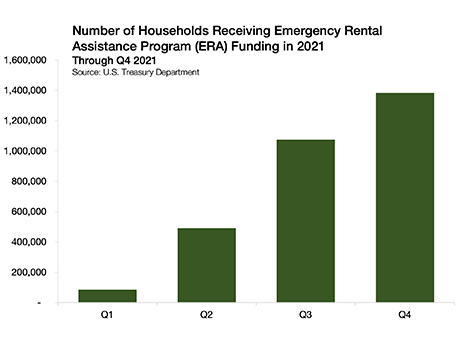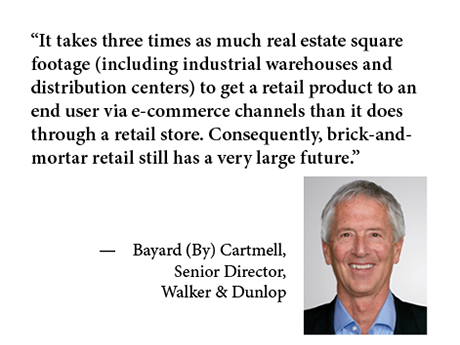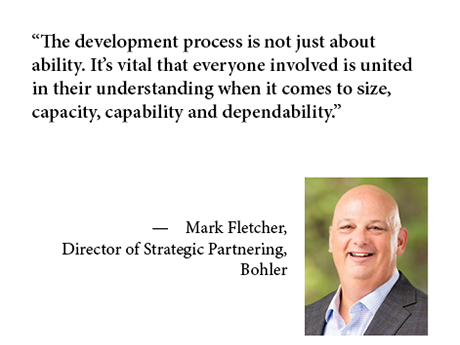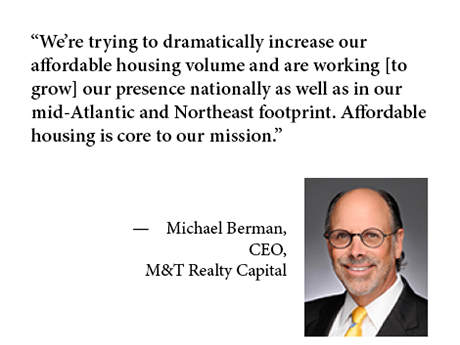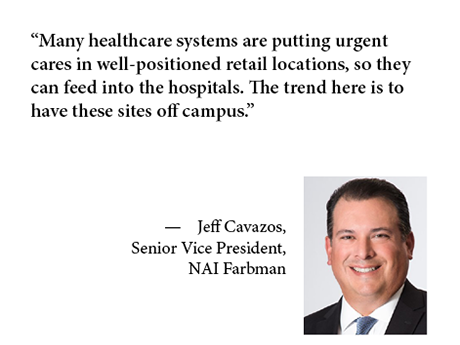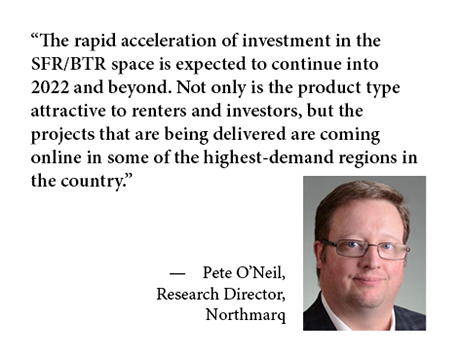By Omar Eltorai, Arbor Realty Trust To understand the affordable housing market in spring 2022, one needs to first assess how this sector weathered the pandemic and then assess the current state of housing affordability across the country. In-depth findings on these trends are included in the Arbor Realty Trust-Chandan Economics Affordable Housing Trends Report, from which this article is excerpted. Weathering the Pandemic When it comes to the pandemic response, federal policymakers proved effective at defusing a large-scale increase in homelessness from financially insecure households. The Center for Disease Control and Prevention’s (CDC) eviction moratorium, while unpopular among industry advocates, prevented an estimated 1.6 million evictions, according to an analysis by Eviction Lab. After the Supreme Court struck down the federal moratorium in August 2021[1], the wave of evictions that many were forecasting did not immediately materialize. Nationally, tracked eviction filings ticked up but remained well below their pre-pandemic averages, according to Eviction Lab. A key reason why many at-risk renters have remained in their homes is the deployment of funds allocated in the Emergency Rental Assistance Program (ERA) — a funding pool designed to assist households that are unable to pay rent or utilities. The ERA Program was …
Content Partner
Affordable HousingArbor Realty TrustContent PartnerDevelopmentFeaturesMidwestMultifamilyNortheastSoutheastTexasWestern
Content PartnerFeaturesIndustrialLeasing ActivityLee & AssociatesMarket ReportsMidwestMultifamilyNortheastOfficeRetailSoutheastTexasWestern
Lee & Associates’ First-Quarter 2022 Economic Rundown by Sector
Lee & Associates’ newly released Q1 2022 North America Market Report scrutinizes first-quarter 2022 industrial, office, retail and multifamily outlooks throughout the United States. This class-by-class review of commercial real estate trends for the first quarter of the year focuses on how real estate is adjusting to long-term post-COVID attitudes. Lee & Associates has made the full market report available here (with further breakdowns of factors like vacancy rates, market rents, inventory square footage and cap rates by city), but the overviews offered below provide sweeping looks at the overall health and obstacles for four major commercial real estate sectors. Industrial: Rents Pushed on Strong Demand Strong demand for industrial space throughout North America continued in the first quarter as vacancies fell to record lows and rent growth hit double digits. First quarter net absorption in the United States totaled 92.8 million square feet, which was up 25 percent year over year but down 35 percent from the 143-million-square feet average of the last three quarters of 2021. Annualized rents rose 10.1 percent in the U.S. and the average vacancy rate fell to 4.1 percent. Part of this trend was due to a pause in new construction starts early in the pandemic. However, …
Affordable HousingContent PartnerDevelopmentFeaturesGeorgiaLumentMidwestMultifamilyNortheastSoutheastTexasVideoWestern
Utilizing Tax Credits to Create Affordable Housing in High-Opportunity Communities
The Section 42 Low-Income Housing Credit program has been America’s primary tool in the effort to construct affordable homes for low- and moderate- income households and ease renter cost burdens since 1986. This public-private partnership has created or preserved more than 3.1 million rental units, accounting for over 30 percent of the nation’s affordable housing stock. Congress is considering legislation that would materially expand and strengthen the tax credit program. In addition to several technical changes to tax credit accounting and rules governing the use of private-activity bond financing, the legislation would authorize increases in credit allocation in 2021 and 2022. The impact of these changes would be substantial, catalyzing construction of more than 100,000 additional units per year over a 10-year period, perhaps trimming the number of rent burdened low-income households by half. Building more affordable housing will represent a significant step toward reducing housing instability and economic inequality in America. But are quantitative gains alone enough? Constructing affordable housing in low-poverty, high-opportunity census tracts is challenging. The following discussion explores some ways in which developers, lenders and credit allocating agencies can increase the level of affordable housing construction in low-poverty, high-opportunity areas (LPHOA) and optimize the …
As the pandemic recedes, unusual supply and demand trends have taken root in retail and industrial markets throughout the nation. Factors that caused upheaval even before the arrival of COVID — the changing face of retail due to e-commerce and the growing demand for industrial real estate — continue unabated two years past the pandemic lockdowns. Los Angeles County may act as a bellwether for the rest of the country in retail and industrial trends, especially in high-cost, high-density areas, where these two real estate types often compete for space. Bayard (By) Cartmell, senior director at Walker & Dunlop, Los Angeles, has extensive experience with commercial real estate in the Los Angeles area. He has seen unprecedented demand for industrial space and growing investor interest in retail cap rates in the Los Angeles area. Cartmell sat down with REBusinessOnline to talk about the outlook for industrial and retail in Los Angeles, their intersections and the sector trends he expects to see in the coming year. Los Angeles Industrial — High Demand REBusiness: What are you seeing in terms of demand for industrial space — particularly in Los Angeles? Cartmell: There is currently almost unlimited demand for industrial space, of any size, …
Where do people go to “get away from it all” — especially when the world shuts down? Many seek relaxation and recreation in the great outdoors. Interest in camping — especially the subset of high-end camping often referred to as “glamorous camping” or “glamping” — grew steadily in the years before the pandemic. The arrival of COVID and the desire for socially distanced vacations created a rapid increase in demand and revenue. The result for commercial real estate has been a large increase in the number of investors interested in outdoor hospitality properties. “Before 2020, the trend was already very strong; the pandemic just accelerated it,” says Sean Wood, associate broker at NAI Outdoor Hospitality Brokers. Wood cites the Kampgrounds of America (KOA) 2021 Annual North American Camping Report: “From 2014 to 2018, there was consistent growth of about 2 million new households per year getting into camping across North America. From 2018 to 2019, we saw a jump from 39.2 million to 41.9 million households that went camping. And then in 2020, we saw an explosion in interest: from 41.9 million households to 48.2 million households camping each year.” The specialists at NAI Outdoor Hospitality Brokers expect this renewed …
When it comes to commercial real estate development, thoughtfully curated teams are critical to success. “It’s important that the extended team works well with each other, so they can deliver results for clients,” explains Mark Fletcher, director of Strategic Partnering at Bohler, a land development design and consulting firm. Developers don’t want to work with a variety of disjointed processes and personalities. They want to work with one team, a multi-discipline team that effectively manages time and resources, focusing on streamlined processes and speed to market. This sort of team unity promotes both cohesiveness and consistency in outcomes. Building a great design and consulting team means having the property developer’s end goals in mind from the very start of the process: dependability, speed to market and turnkey solutions. The importance of fostering cohesion extends to finding an architect to optimize the building and a contractor to strategize materials and phasing. It may be necessary to engage an attorney who can work well with the team to address land use and zoning. Finally, the right site design and consulting firm can streamline communications, maintain timelines and entitlements and keep the project moving forward. Here’s how Bohler’s approach to assembling a team …
M&T Realty Capital Corp. is beginning 2022 with ambitious plans to increase its multifamily financings as part of an effort to double its real estate loan volume over the next two to three years. To achieve those goals, it is leveraging a new leadership structure and a recently announced strategic partnership with the Marcus & Millichap Capital Corp. M&T Realty Capital, M&T Bank’s commercial mortgage banking subsidiary, recorded $5.1 billion in loan volume in 2021, a level that was just below its high watermark of $5.2 billion in 2019, says Michael Berman, CEO of M&T Realty Capital. Multifamily loans made up of the lion’s share of financings, he adds, and the sector provides a significant growth opportunity going forward. “Multifamily is a hot a sector right now — everyone is trying to invest in it,” he says. “It’s just an extraordinarily healthy asset class because of its supply and demand dynamics.” Indeed, the U.S. apartment market enjoyed a banner year in 2021 across all measures. Investment volume reached a record $335.3 billion, nearly 75 percent above the record volume of $193.1 billion posted in 2019, according to commercial real estate brokerage CBRE. Meanwhile, renters absorbed 617,500 apartment units in 2021, …
The famed stability of healthcare and medical office building (MOB) real estate continues in 2022, with the Midwest acting as a microcosm for the sector’s trends and challenges nationwide. Adapting to complement large healthcare system needs, adding urgent care centers and keeping costs low are some of the main concerns for brokers this space. Five healthcare/MOB brokers sat down with REBusinessOnline to discuss what is influencing the sector. Michael Kalil, chief operating officer and director of brokerage, and Jeff Cavazos, senior vice president, NAI Farbman, Southfield, Mich.; Matthew Gregory, senior VP office brokerage, and Michael Simpson, president, NAI Ohio Equities, Columbus, Ohio; and Doug Taatjes, partner/associate broker, NAI Wisinski of West Michigan, Grand Rapids, Mich. weighed in on the present and future of healthcare/MOB real estate. REBusiness: What trends are we going to see in healthcare in 2022? What factors might influence further investment in this field? Matt Gregory: Improvements to building infrastructure will be the most significant trend in 2022. There will be a push toward better HVAC filtration, higher cleaning standards and so forth. Mike Simpson: Yes, I think the healthy building initiative is something that’s going to pick up more momentum this year. Doug Taatjes: In our …
Build-to-RentContent PartnerFeaturesLeasing ActivityMidwestMultifamilyNortheastNorthmarqSingle-Family RentalSoutheastTexasWestern
Single-Family/Build-to-Rent: Changing Renter Demographics Fuel Growth
Demand for all forms of housing has been on the rise in recent years, a trend that is expected to continue in 2022. One segment of the market that is attracting significant attention is single-family/build-to-rent (SFR/BTR), as a series of economic and demographic shifts increase the attractiveness of an alternative to traditional apartments. Developers are ramping up activity on thousands of new units, particularly in the high-growth southern U.S. markets. Dozens of projects totaling more than $1.5 billion sold in 2021. Meanwhile, billions of dollars of debt and equity capital continue to move into this increasingly attractive investment class. Northmarq’s National Multifamily 2022 Outlook covers the record-setting momentum that multifamily properties across the United States saw last year and projects what the market may see in 2022. Northmarq’s full report is available here (with further rundowns on factors like the overall economy, rent trends, the investment market and financing climate). Their analysis on the SFR/BTR market below breaks down the trends and opportunities for growth in this burgeoning sector. Reasons for Growth Several factors are prompting the development of SFR/BTR. A primary influence is the changing mix of renters; today’s renters are generally older and more affluent than in the past. These …
Content PartnerFinance InsightLoansMidwestMultifamilyNortheastSoutheastTexasVideoWalker & DunlopWestern
Web-Based Appraisal Tool Supports Massive Increase in Demand for Multifamily Valuations
Multifamily appraisers are extremely busy as investor interest in the sector is at an all-time high. “In terms of appraisal professionals, there is a supply and demand issue,” explains Meghan Czechowski, managing director and valuation lead for Apprise by Walker & Dunlop. She notes that the industry has greater demand for valuation than it has qualified appraisers. “Apprise is ensuring that we can support our appraisal staff and our local market experts with a tech-enabled process so that they can do their jobs more efficiently and get the values (and market information in general) into our clients’ hands as quickly as possible,” she adds. Czechowski focuses on the ways that web-based multifamily valuations can be streamlined to create a faster and more complete picture of properties. Multifamily experts need information on properties/parcels that comes from “multiple industry-standard resources such as Yardi, REIS, RCA and public record aggregators.” Parcel-level information, unit mix metrics, sale leads, land records and site assessment information are all available through Apprise’s platform via a single sign on to a dashboard that reflects information that is constantly being updated. This means that when an expert uses this platform and picks up the phone to confirm about …


